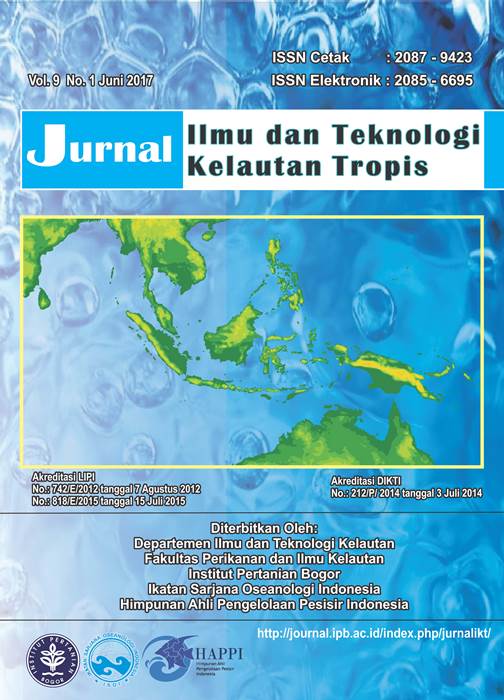DENSITY AND THE COVERAGE OF SEAGRASS ECOSYSTEM IN BAHOI VILLAGE COASTAL WATERS, NOTRH SULAWESI
Abstract
Physical seagrass ecosystem damage have been reported in various regions in Indonesia. Seagrass ecosystem damage is caused by human activity such as trampling seagrass and boats that muddy the waters and reduced the density and seagrass cover. This study aims to provide information about the density and the coverage of seagrass. The method used in this research is the transect method measuring 50x50 cm squared at three different locations by considering coastal ecosystems Bahoi village that already exist. Station 1 is near to mangrove habitat, station 2 is right on seagrass habitats, and station 3 is near to coral reef habitat. The results indicated there is six seagrass species that found in the Bahoi village which is Enhalus acoroides, Thalassia hemprichii, Cymodocea rotundata, Syringodium isoetifolium, Halophila ovalis, and Halodule uninervis. The density and seagrass cover is shows that the station 1 has the highest density and seagrass cover percentage compared with the other stations. The highest density of seagrass species located in station 1 with 955 individuals/m2, and the lowest was located at station 3 with 699 individuals/m2. While the highest cover percentage is located at station 1 with 270% and the lowest located at station 3 with 229%.
Keyword: seagrass ecosystem, density, coverage, Bahoi
Authors
The author submitting the manuscript must understand and agree that the copyright of the article manuscript must be submitted/transferred to the Jurnal Ilmu dan Teknologi Kelautan Tropis. This work is licensed under the Creative Commons Attribution-ShareAlike 4.0 (CC BY-SA) International License in which the Author and Reader can copy and redistribute the material in any media or format, and remix, modify and build material for any purpose, but they must provide appropriate credit (citing articles or content), provide a link to the license, and indicate whether there is a change. If you mix, change, or create material, you must distribute your contribution under the same license as the original.


